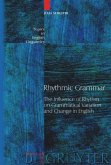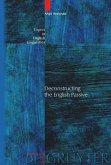The essays of this volume employ diverse strategies for conceptualizing the history of English as at once chaotic and yet amenable to circumscribed analyses that incorporate a broad view of language change. Several of the world's leading scholars of the English language contribute to the overall perspective that an elaboration of linguistic, cultural, and social contexts and a renewed emphasis on the concrete historical conditions of language change are necessary to approach some long-standing obstacles in the study of the history of the English language.
Designed for students, teachers, and scholars of the English language, Managing Chaos: Strategies for Identifying Change in English (SHEL III) presents studies on all periods of the English language in a variety of theoretical and methodological modes. Highlights include Anatoly Liberman's sweeping comparative revision of the history of palatalized and velarized consonants in English; William Kretzschmar's (et al.) wittily illuminating study of a suburban Atlanta, Georgia town that epitomizes the specific ways in which inter-regional linguistic variation can be maintained while local social factors drive dramatic change on an intra-regional level; Lesley Milroy's innovative analysis of recent unitary changes in global Englishes that cannot be accounted for by classic Labovian models that situate language change within small, close networks of speakers who mediate variation in face-to-face interactions, an observation that leads Milroy to propose two distinct but cross-influencing levels of social dynamics in language change.
All of the essays of this volume include careful critiques of the construction of our present understanding of the history of English, thus marking the path behind while shining a light on the way ahead for the future of the discipline.
Designed for students, teachers, and scholars of the English language, Managing Chaos: Strategies for Identifying Change in English (SHEL III) presents studies on all periods of the English language in a variety of theoretical and methodological modes. Highlights include Anatoly Liberman's sweeping comparative revision of the history of palatalized and velarized consonants in English; William Kretzschmar's (et al.) wittily illuminating study of a suburban Atlanta, Georgia town that epitomizes the specific ways in which inter-regional linguistic variation can be maintained while local social factors drive dramatic change on an intra-regional level; Lesley Milroy's innovative analysis of recent unitary changes in global Englishes that cannot be accounted for by classic Labovian models that situate language change within small, close networks of speakers who mediate variation in face-to-face interactions, an observation that leads Milroy to propose two distinct but cross-influencing levels of social dynamics in language change.
All of the essays of this volume include careful critiques of the construction of our present understanding of the history of English, thus marking the path behind while shining a light on the way ahead for the future of the discipline.








